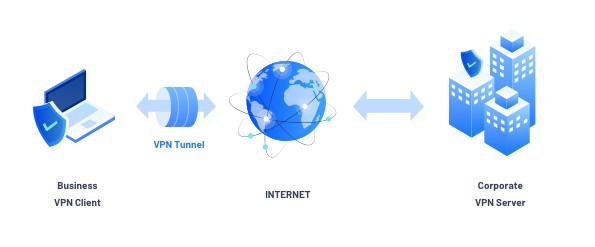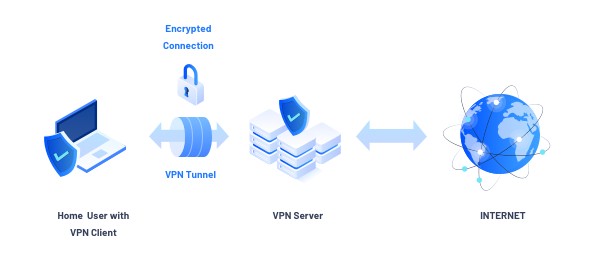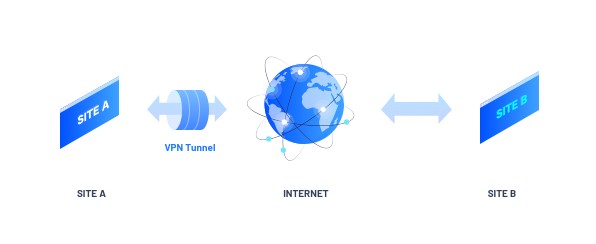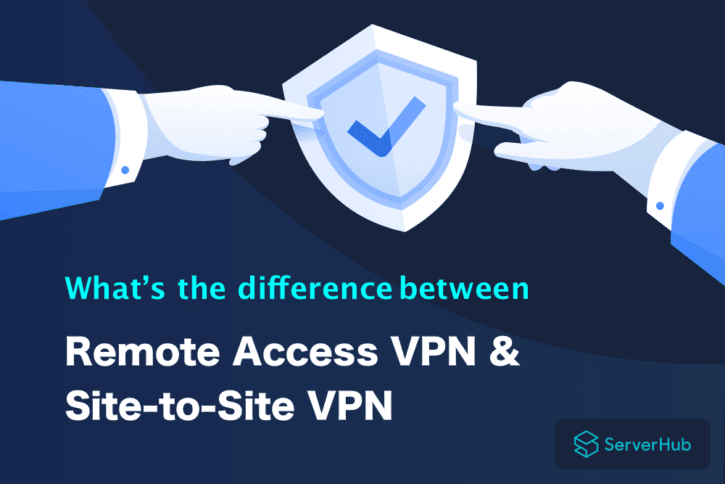As we all know, Virtual Private Networks come in two different types: Remote VPN and Site-to-Site VPN.
Though they function in completely different manners, those two types, have a lot in common and sometimes even serve the same functions.
In this article, we will dissect each of the two VPN types, explaining what they are, and comparing between them when it comes to functionality and purpose.
Remote Access VPN
Remote Access VPN is the type by which a Client/Site relationship is built between the user and the server. It is the most commonly used VPN Type as Remote Access VPN clients are usually very easy to install and use, giving the user security as well as freedom which makes it ideal for both Personal and Business uses.
All communication between the user of the VPN Client and the site with the VPN Server travels through a VPN Tunnel to the internet and from the internet to the end-destination.
The VPN Tunnel created is one of many VPN Protocols used to secure the connection, however, it is the most commonly used one.
Though the connection between the Client and the Server aims to give the Client access to the Server’s Private Network, the added encryption mostly aims to secure that connection.
There are 2 most common instances for Remote Access VPN use:-
1. Commercial Use:-

As shown above, a connection between the Business User’s VPN Client and the Corporate’s VPN Server is established over the internet. That connection is encrypted and protected by the VPN Tunnel that passes between both sides.
2. Personal Use:-

In this case, a regular home user is the one with access to the VPN Client.
Once the user connects to the VPN Server (through an encrypted and secure VPN Tunnel), the VPN Server connects to the internet.
This gives the user the ability to access restricted websites and to browse the internet with safety and protection from hackers and snoopers.
Site-to-Site VPN

Site-to-Site VPN functions differently from Remote Access VPN. Its main goal is to connect two or more fixed locations to each other, giving them the ability to access each other’s networks and resources.
That’s why it is also referred to as LAN-to-LAN VPN. That’s because it connects a Local Area Network (LAN) and another Local Area Network (LAN) to a single Wide Area Network (WAN), sharing both networks’ resources and information securely with each other as shown above.
This process requires heavy equipment and a very specialized installation system, which is why it is mostly used by corporations rather than personal users. It is not easy to implement and doesn’t provide the same level of flexibility that Remote Access VPN offers.
There are two types of Site-to-Site VPNs:-
1. Intranet Based Site-to-Site VPN:-
This is mostly used by corporations with multiple offices, trying to connect their own offices to one main network.
A clear tunnel is built between Site A and Site B. That tunnel encrypts the data passing between them, making it accessible by both sites.
The limitless accessibility between both sides is done through Intranet Based Site-to-Site VPN.
2. Extranet Based Site-to-Site VPN:-
This type is used when two different corporations are connecting to each other with limited accessibility, not allowing the other party to access their entire network.
It usually functions on the same manner but with different protocols. The data that passes between both Sites is encrypted and a clear tunnel is built between Site A and Site B.
In this case, however, the data is only made accessible by both sites after passing through a strict authentication process, making sure that the user sending for that data has been given accessibility and permission to access it by the main network.
Conclusion
Those are the two main types of VPN. There are many other less popular types that are set up with their own VPN Protocols, however, those two types are the ones most commonly used by both corporations and home users alike.
For more educational resources related to VPN (and more), make sure to pay a visit to ServerHub’s Knowledgebase.

This actually answered my problem, thank you!